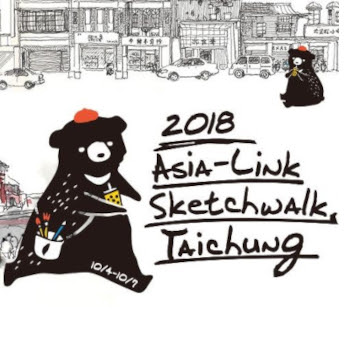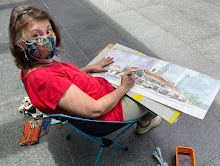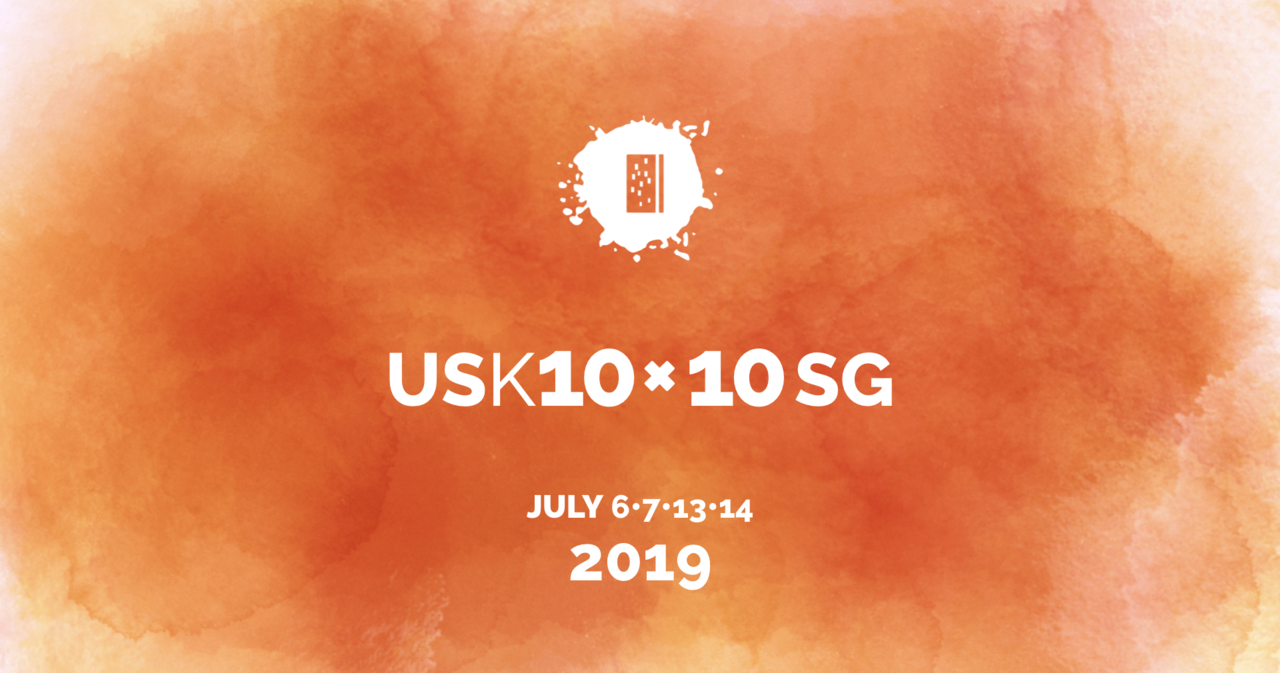Here is one more reason for me to think architects, designers, artists and illustrators from urbansketchers are as original as they can be having a common belief in drawing from everyday life through honest observation.
Personally I am not too hot about taking a direct interpretation of someone's work and spin it into something else. I like to think we should create from life observation and our understanding of a topic with references from life that we know no matter how rich or small. But then again, every master goes through the same process as Fairey, even in architecture, in literature, in music (after so and so), in theatre and of course in art.
For me, I have also created work after Picasso and Le Corbusier but I am not proud about it. The titles are always "after so and so". They are my study pieces.
It is really a personal choice and I have made my choice.
The Background:
We have a lively discussion in the office among some colleagues on the latest news about this article on Shepard Fairey which I had a post here.
Thanks to Jeffrey Ang, my colleague who sent me an email with these links:
Critique on Shepard Faireys earlier works by artist Mark Vallen:

Left: Political power comes from the barrel of a gun - Artist unknown. 1968. Chinese poster from the Great Proletarian Cultural Revolution period. The title of this poster quotes the famous pronouncement made by Mao Tse-Tung. Right: Fairey's plagiarized version titled, Guns and Roses. The Chinese poster's central motif of hands bearing machine guns was plainly digitally scanned without any alteration. Fairey, or his assistants, then applied a modified sun-burst background, placed clip-art roses in the gun barrels, and released the imitation in 2006 as a supposed original work.
Source: http://www.art-for-a-change.com/Obey/index.htm

Left: Fairey's derivative poster, Greetings from Iraq, printed in 2005. Right: Ranger Naturalist Service: Yellowstone National Park - Artist unknown. Silkscreen. Circa late 1930s. Created for the Works Progress Administration (WPA) in order to promote travel to America's national parks.
Source: http://www.art-for-a-change.com/Obey/index.htm









![Logo _Jan20_version7 [Converted]](https://farm9.staticflickr.com/8736/16890205286_287a880265_z.jpg)









![logo _jan20_version7 [converted]](https://blogger.googleusercontent.com/img/b/R29vZ2xl/AVvXsEgsbv1sOIGr9kVjb3X_EgbBQ17oUw7SOhF9PTHlFvvRT52MFjlXd-G5N0zdCOKTmzv7WEx1T-kOXGTvlSkZNn6hkECQVqPLx1Z9dDXldCjnUSJjU9pj6rzUIYNq36_bFq3nR2tk/s1600/amsterdam.png%20width=)
![logo _jan20_version7 [converted]](https://blogger.googleusercontent.com/img/b/R29vZ2xl/AVvXsEizAeyepSIKwbPCSyEYjo_qHo2k9PDLZG5fgI83UfzRau9_bFete290u2VaKo9jz3vVNuWhYW7XaCIuQg6H6vqmoe6PGzcslMvOmVVy3p2bxZJEQDe1qw1IP4HF1e-2aGXK1zPd/s1600/Chicago2017_FINAL-01.jpg%20width=)
![logo _jan20_version7 [converted]](https://blogger.googleusercontent.com/img/b/R29vZ2xl/AVvXsEhAx-I7YEnxmSezaoySaLCOEvNulDrrMQONznyBU7Z6ajYEaP5-P7mtCXvpPtRohAxvGrfYSbIs5sFlrh8ldSclFZQZiSCuFfdMOHv1OKyXedSlk66TL0eumFJFNcSWgoi_u8lwxg/s900/Urban_Sketchers_Manchester_2016_Black.jpgwidth=)




